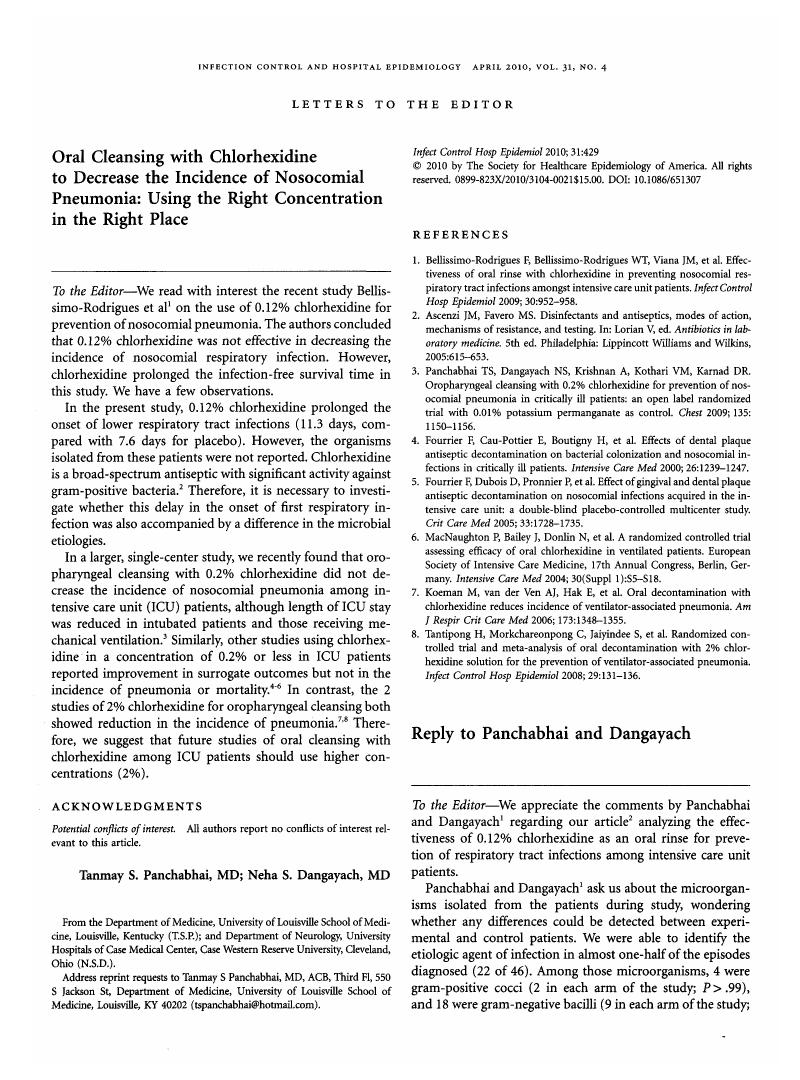Crossref Citations
This article has been cited by the following publications. This list is generated based on data provided by Crossref.
Bellissimo-Rodrigues, Fernando
Bellissimo-Rodrigues, Wanessa Teixeira
and
Martinez, Roberto
2010.
Reply to Panchabhai and Dangayach.
Infection Control & Hospital Epidemiology,
Vol. 31,
Issue. 4,
p.
429.
Reed, R. Lawrence
2011.
Prevention of Hospital-Acquired Infections by Selective Digestive Decontamination.
Surgical Infections,
Vol. 12,
Issue. 3,
p.
221.
Ahmad, Lateef
2021.
Impact of gargling on respiratory infections.
All Life,
Vol. 14,
Issue. 1,
p.
147.



